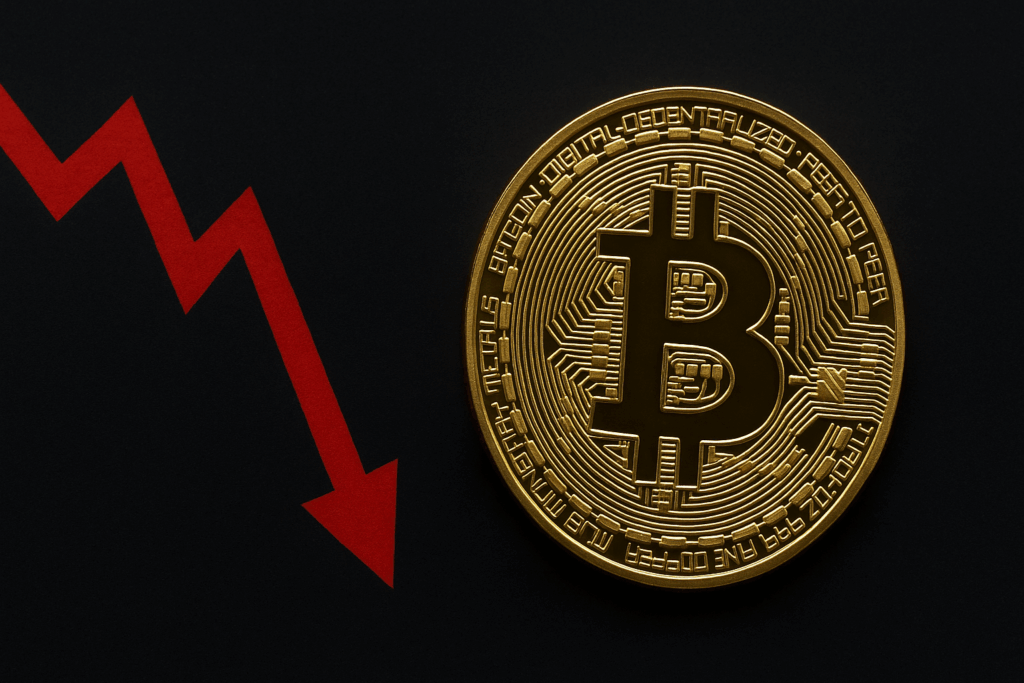Key Insights
- Bitcoin price dropped to a three-week low of $114,000 after Trump’s new tariff order.
- Over $750 million in crypto liquidations occurred, most of which were long positions, with millions from trader @AguilaTrades.
- Market sentiment has turned fearful ahead of U.S. nonfarm payroll data.
Friday saw the Bitcoin crash below $115,000, marking the lowest point in three weeks. This correction came in response to tension after the US President’s executive order to apply sweeping trade tariffs.
The drop triggered panic across the markets and led to liquidations, as investors rushed to take profits. As market watchers digest this news, it becomes clear that several factors played a part in the Bitcoin crash.
Bitcoin Crash Deepens as Tariff News Roils Markets
The crypto market recorded a Bitcoin crash to $114,250 on Coinbase during early Asian trading hours. This crash caused a break in the cryptocurrency’s three-week range. This marked a 7% pullback from its all-time high of $123,000 from July 14.
The fall came shortly after Trump’s executive order finalized trade tariffs. These tariffs targeted countries like South Africa, Switzerland, Taiwan, and Thailand. In detail, duties on these countries now range from 19% to 39%.
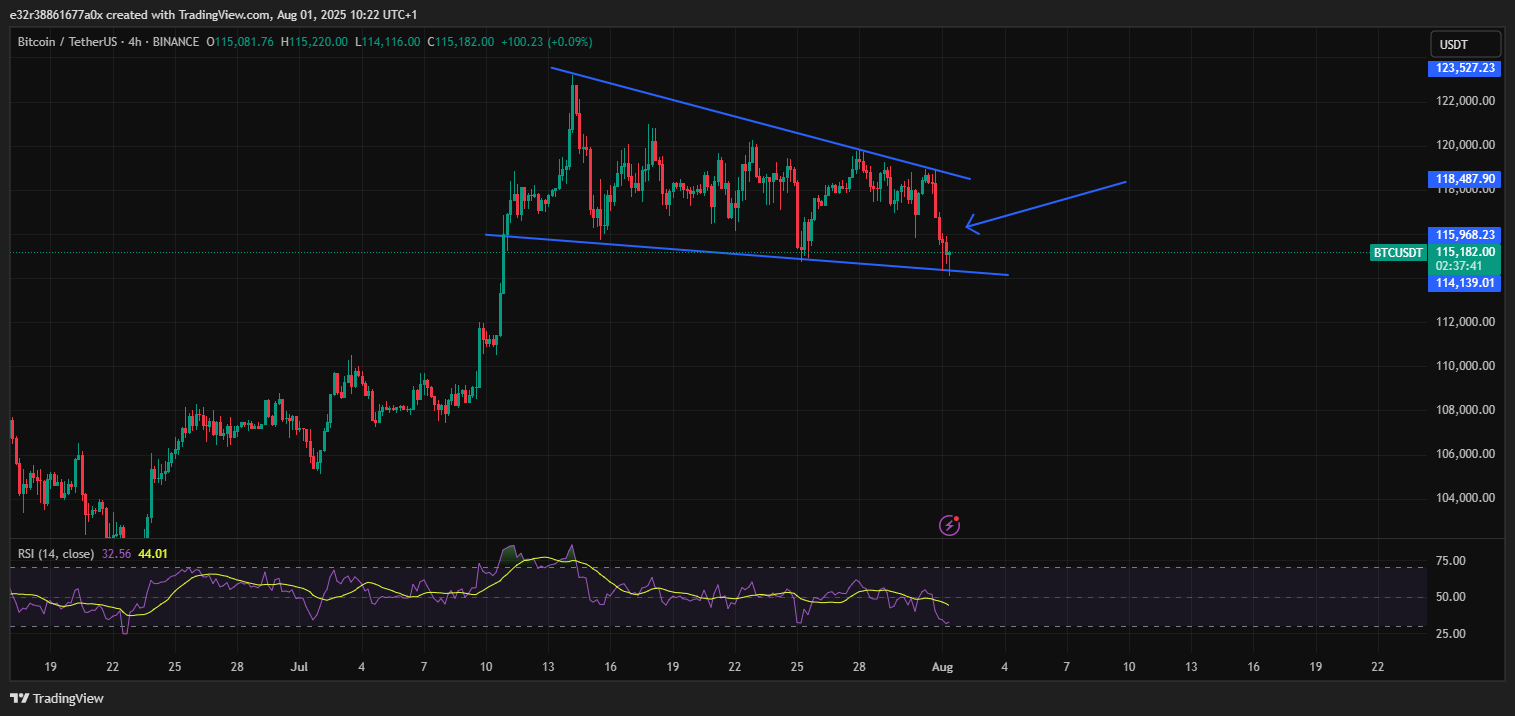
Even U.S. allies like Canada, the European Union, Japan, South Korea, and the United Kingdom weren’t left out. They also suffered from these new trade deals.
The sweeping nature of the tariffs sent the worldwide markets into a tailspin. Asian stocks opened lower, and cryptos followed suit.
Massive Liquidations and Long Position Wipeouts
According to Coinglass, over 158,000 traders were liquidated. This resulted in more than $750 million in losses within 24 hours. Long positions comprised the bulk of these wipeouts. This showed how overleveraged the market had become as Bitcoin soared.
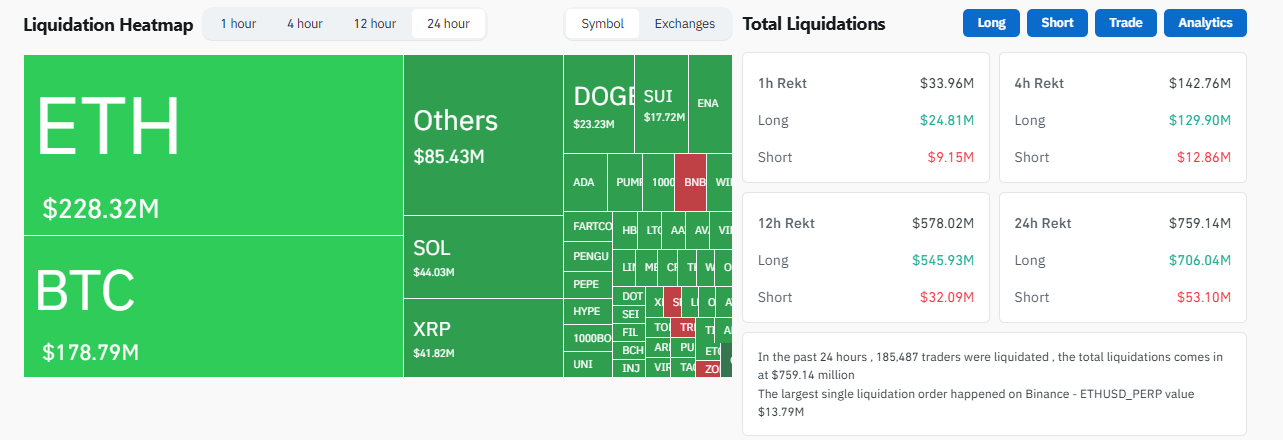
Binance and Bybit accounted for more than 67% of the liquidations, and showed investor euphoria had reached red-hot levels. In the past hour alone, $12 million in Bitcoin-specific liquidations came into play. This confirmed a chain reaction of leveraged position collapses.
Infamous crypto trader @AguilaTrades may have also contributed to the Bitcoin crash, per OnChain Lens. The trader had previously returned from losses of up to $35 million through the year.
At some point, the trader even momentarily sat on unrealized profits of about $3 million. However, things started to take a bad turn. This happened when he opened another aggressive BTC position worth around 720 BTC or $83.3 million. He ended up being liquidated on July 25.
By the end of July, this notorious trader had suffered four consecutive liquidations. As of writing, @AguilaTrades now has losses close to $40 million. This flush-out erased Bitcoin’s gains in July and exposed how fragile the market had become.
General Crypto Market Mirrors the Bitcoin Crash
Bitcoin wasn’t the only asset hit by the bears. Ethereum dropped by 6.4% to trade at $3,611, while Solana and XRP declined by over 7%. The altcoins, in particular, saw heavier losses because they tend to carry higher volatility and speculative trading activity.
This trend was reflected in the data from Coinglass. This showed that nearly 93% of all liquidations during this period were from long positions.
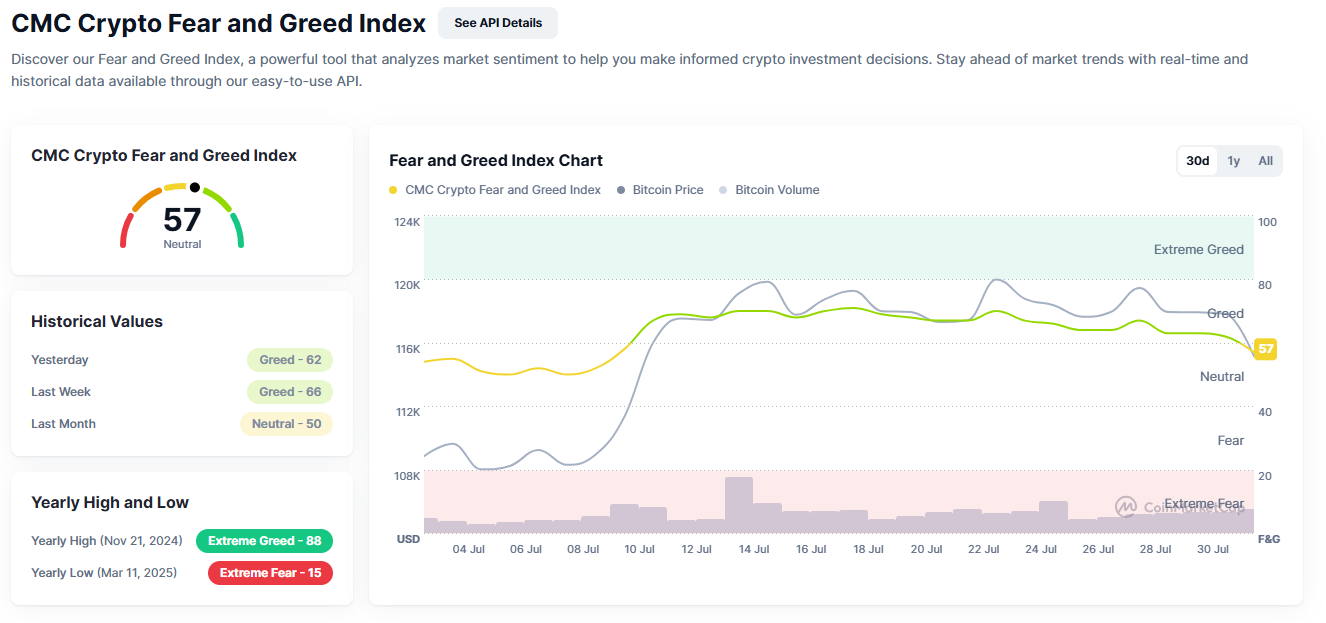
Meme coins like Dogecoin and Trump-themed tokens also suffered the heat of the Bitcoin crash. The fear and greed index dropped to 57/100. Interestingly, this metric showed greed levels of 70/100 only last week, on 23 July.
What Triggered the Bitcoin Crash?
There isn’t one single reason behind the Bitcoin crash. However, factors like Trump’s tariff uncertainty, profit taking from large players, and the general macroeconomic caution likely played a role. This is without mentioning how overleveraged the market had become.
The profit taking started as far back as mid-July, when Bitcoin first hit the $123,000 zone. This happened especially amid fears of inflation and interest rate decisions from the FOMC.
It is worth mentioning that this week, the Federal Reserve kept interest rates at 4.4%. It hinted at caution for September as well. The investor jitters from Powell’s decisions likely reduced investors’ appetite for risk and encouraged them to sell.
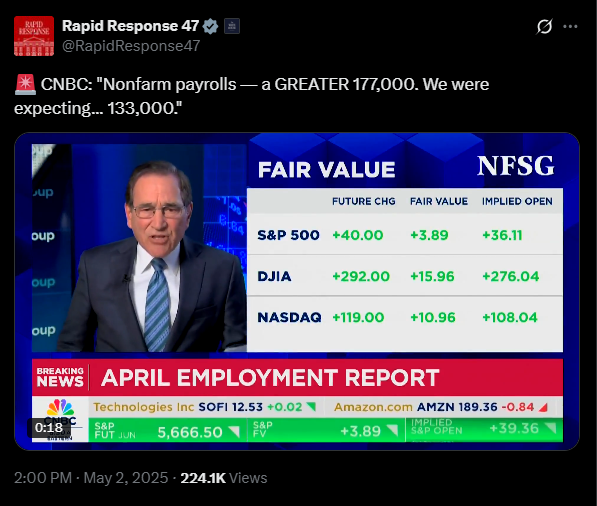
Will the crash continue? Notably, despite the decline, Bitcoin has gained over 8% since the start of July. It is also well above its June support zone around $100,000.
Analysts believe BTC may fail to hold above the $113,500–$114,000 zone. If this happens, it could revisit earlier consolidation levels near $110,000.

